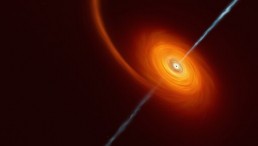Jupiter
See What Tools Made the Cut Aboard the Upcoming Europa Clipper Mission
NASA Learns What the Mysterious Dark Material on Europa Is
From the Surface of Jupiter's Moon—Europa Reveals Icy Glass
Are Ceres' Bright Spots Signs of Alien Life? NASA Wants You to Weigh In
Scientists Catch Light Bouncing Off Exoplanet
Ganymede's Aurora Hints at Ocean Under Jupiter Moon's Surface
Jupiter Could Forever Be Known as the Solar System's Wrecking Ball
Jupiter and Its Moons Set to Put on Astronomical Show
Three Moons Cast Shadow on Striped Gas Giant—Jupiter
Researchers Reveal Method for Magnetic Field Calculation of Exoplanets
Most Popular

Ultra-Processed Foods Linked to Shorter Lifespan, Study Reveals; How Dangerous Are They?

Anavex Life Sciences Alzheimer's Treatment Brings Hope to Millions

S73-7 Satellite That Has Been Missing Rediscovered Orbiting Undetected for 25 Years

Gargantuan Sunspot 15 Times Wider Than Earth Erupts With Massive X-Class Solar Flare Causing Radio Blackouts





